Every day the nurseryman rises and prays and walks the rows of his trees. Redbud and sweetgum, chokecherry and crabapple, hornbeam and plum. Maple. Weeping willow. Poplar. Acer rubrum. Salix alba “Tristis.” Liriodendron tulipifera. Armstrong. Niobe. Little Volunteer. The names are an incantation. Here in the rows it’s peaceful, just enough shade to ease the heat. There’s birdsong and the breeze in the leaves and you can hear your footsteps one to the next to the next. There’s a creek down in the bottoms and the place smells of flowers and sweet water and clean earth. If you look straight up you see the blue sky. You feel the world fall away. It is a pretty place.
But Don Eaton is in trouble. Real trouble. Eaton Farms is surrounded.
Don Eaton is a big man, a tall man, wide and high as a doorway. Late 50s, sandy hair going gray, big handshake. Smart.
Big ideas. Big faith. Been a grower a long time. A born farmer. The footer on his emails nods to the Bible, the Book of Luke, “Keep your hand on the plow.”
He started this place with his father. Now he works the farm and the business with his wife, Kathy, and their six children, all of whom live near enough that the 16 grandchildren are around too, helping in the potting shed and whooping and chasing each other through the rows.
“Our average production schedule today is probably at 48 months,” he says. “That means I have to plant four crops before I get to sell the first one. So trees are capital intensive. It’s a high-risk crop because there are threats. But the profit margin is there.
“Over my 35 years, I’ve watched the industry go from independent garden centers, who were and are still my customer base, to where 85 percent of the market is now with mass retailers.” Eaton Farms does not sell to the big chains.
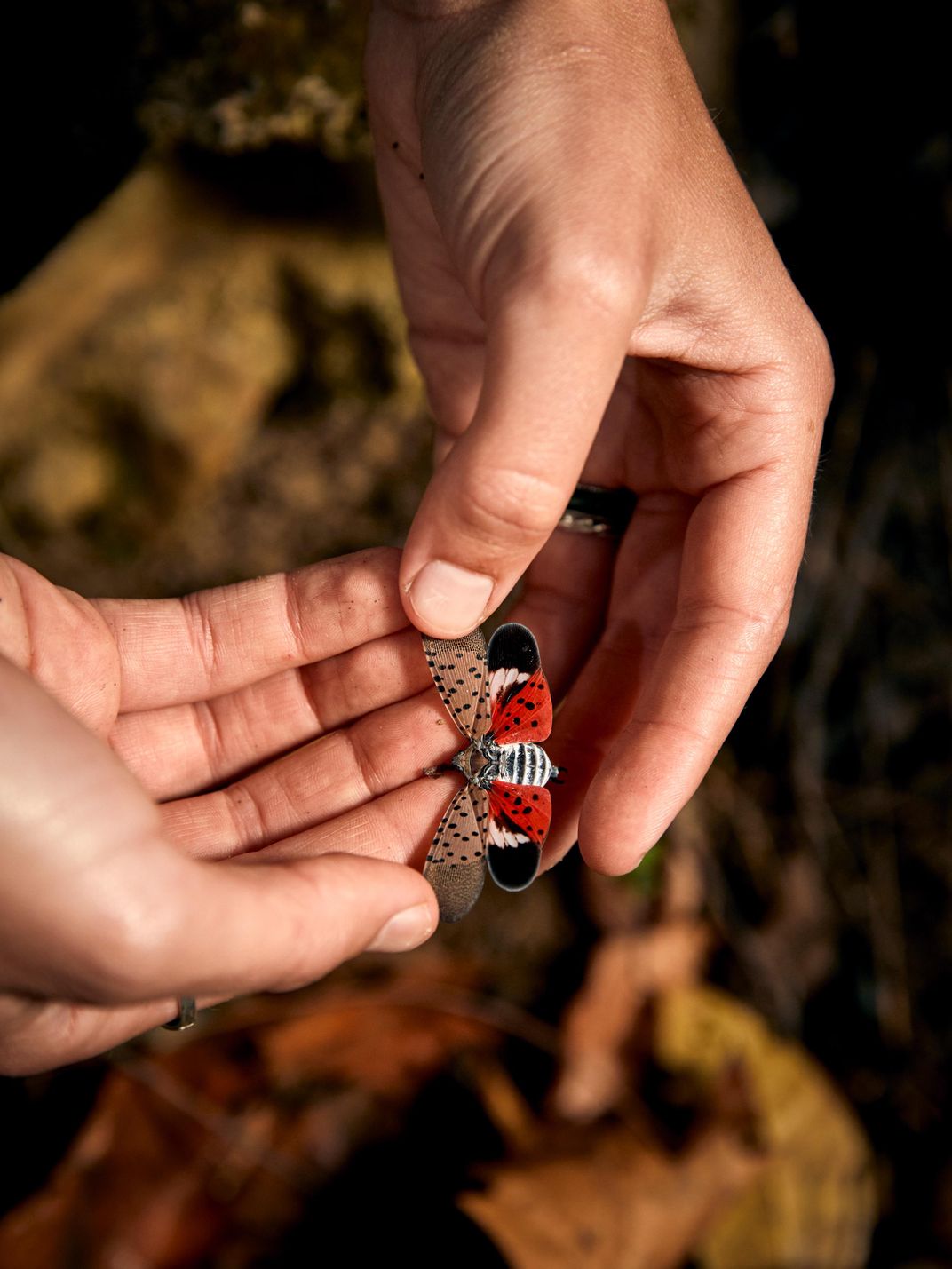
In 2010, after the recession, Don saw a business opportunity. He used to grow what he describes as “A to Z”—shrubs to perennials and trees. That year, he explains, “I went 100 percent trees and topiary as a strategic long-term move, which we’re enjoying today.” He also started Bower & Branch, the family e-commerce enterprise. “I told my kids, all six, that are actually the owners now, that they shouldn’t plant another tree” unless they had a direct connection to retail customers. His daughter Laurel now manages Bower & Branch.
This is over in Leesport, Pennsylvania. Southwest end of the Lehigh Valley, just up from Reading. Not far from Philadelphia. Berks County. Ground zero.
* * *
They found the first spotted lanternfly on September 22, 2014. Found it in Berks County. Just a few miles from Eaton Farms.
“It’s a day you don’t forget.” Dana Rhodes is the state plant regulatory official for the Pennsylvania Department of Agriculture. “Our entomology team received a phone call from an employee with our game commission. They had heard us advise, ‘If you see something unusual, give us a call.’ They noticed a smell and a lot of insects around some tree of heaven. Three of our team went out there and found spotted lanternfly.”
Spotted lanternfly: Lycorma delicatula, ruinous and beautiful, the size of your thumb and a destroyer of worlds. Spotted wings, often a silvery blue-gray, a sort of iridescent gunmetal, with a bright red-orange flamenco petticoat beneath. In every stage from nymph to adulthood, this is a stunning bug. Below-average fliers, but decent gliders and hoppers.
To feed, they unfurl their mouth parts and penetrate the phloem, or vascular tissue, of the tree or vine. They drain nutrients from the plant, and excrete sugar water. This they can do by the thousands or tens of thousands. Lanternfly feed most successfully on another invasive from Asia: Ailanthus altissima.
Tree of heaven.
Even in tony suburbs like Lower Merion, outside Philadelphia, the bug covers the trees. Stand at the foot of a mature maple when lanternfly are feeding and you’ll be showered in “honeydew,” the sugar poop that destroys the forest floor, the understory, with reeking sooty mold stinking of vinegar and molasses. Lanternfly can kill a tree outright, or stress it to the point where it dies over time. Same for hops and grapevines and fruit trees. Billion-dollar cash crops. Like locusts or the European gypsy moth, spotted lanternfly is a genuine threat.
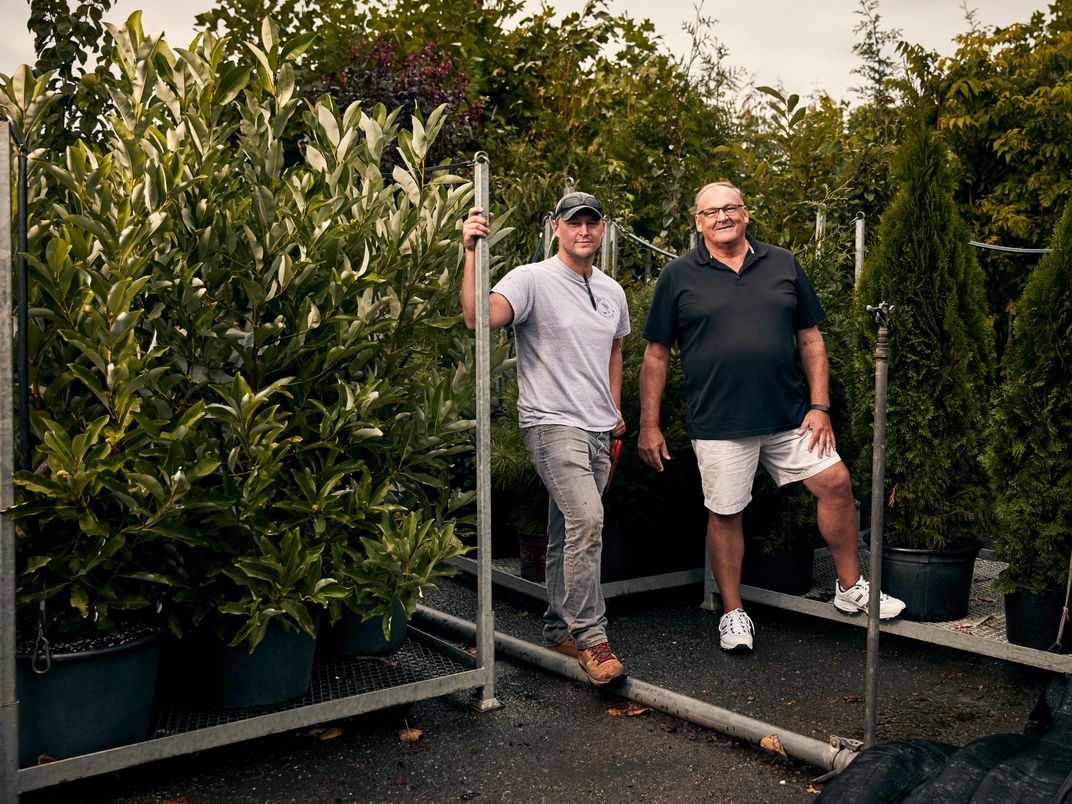
Since its introduction to the United States in 1869 as part of a scheme to increase silk production here, the gypsy moth has defoliated tens of millions of acres of American forest. In 1989 alone, it stripped bare over 12 million acres in the Northeast. And while most hardwood trees bounce back even after a major infestation, many are weakened, made susceptible to disease, and eventually die.
From destruction caused by foliage feeders like the gypsy moth to tunneling insects like the emerald ash borer, losses to cash-crop forests already run in excess of $2 billion a year in the United States. Costs to residential landscaping and property values are also climbing.
In fact, the spread of pests and pathogens damaging plant life could cost global agriculture $540 billion a year. U.S. farm output alone is a more than $300 billion-a-year business. Whether you’re talking about the Asian longhorned beetle or the diamondback moth or more than a thousand species of termite, the cost and effort to mitigate and repair the damage they cause is astronomical and constant.
The U.S. Department of Agriculture pest management budget is north of one billion a year, some of which goes to the USDA Integrated Pest Management Program, which encompasses research universities, extension services and county agents. There’s a worldwide battle being fought in silence from one end of the planet to the other. Make no mistake, this is war.
Gypsy moths blanket New England. Spotted lanternfly is so far found mostly in a relatively narrow band concentrated in the Mid-Atlantic.
Growing Threat
And here’s just a partial list of trees spotted lanternfly might feed upon: almonds, apples, apricots, cherries, maple, oak, pine, nectarines, peaches, plums, poplar, sycamore, walnut, willow, and on and on and on. More than 70 possible food sources have been identified so far, and we still don’t know everything on the lanternfly menu. But we know some of the à la carte prices:
Apples—in 2018 the United States produced 10.2 billion pounds of apples, making the crop a $2.9 billion a year business.
Hops—$600 million a year.
Grapes—valued at a whopping $6 billion annually.
Lanternfly? They’ll lay waste to a whole sector of your economy, then lay eggs in your Christmas tree. The Original Gangster. Read across the warnings and alerts from Georgia to Tennessee to Wisconsin and the news is the same: Be Vigilant. We don’t know enough about the bug, but what we do know is chilling. For ag-based businesses not only in Pennsylvania, but in every corner of America, lanternfly is a detective thriller and a horror movie. A stranger in the darkness.
* * *
Maybe they got here on a load of decorative stone from China. That’s the story you hear, but no one knows for sure. They invaded South Korea a few years ago. Entomologists are in the woods right now trying to learn how to fight a pest we know too little about. Researching defenses like circle traps and sticky bands, which are exactly what they sound like; working on the life cycle of the bug and how it moves from one food source to another as it ages; studying lures and bait trees that might draw lanternfly off the grapevines and out of the orchards; looking for the natural enemies preying on lanternfly. Of which there are too few in North America. There’s a promising fungus that makes a “zombie” of lanternfly, takes over its brain, tells it to climb to the top of a tree, then binds it there to send out the fungus’ own spores. But it needs to be studied. “I’m out there every week talking to growers,” says Heather Leach, an entomologist at Penn State. “Inevitably somebody asks, ‘What’s new? Is there anything else I can spray? What have you figured out?’ They’re really stuck between a rock and a hard place right now.”
Homeowners, she says, are a different story. The lanternfly poses a major threat to everyone’s backyard trees and gardens. “Getting sugary poop dropped down on their cars. Getting insects crawling into their house if they’re on the back patio door.” These are the first ominous signs. So Leach and her colleagues have set up a lanternfly call center.
No one is sure how many lanternflies there are in Pennsylvania right now. Or where they are. A billion or more. You can kill them with pesticides. But you have to find them first.

Leach spends hundreds of hours on the road going from grower to grower and test site to test site. In between, she delivers educational talks to the public. Awareness is a weapon, the first line of defense. She works with Julie Urban, whose office and lab are back at Penn State. Julie is an associate research professor in the department of entomology, specializing in planthoppers.
How much more does Urban know about the bug than she did five years ago?
“A lot,” she says. “As nymphs they’ll spread out and eat really anything, has to be tender, herbaceous.” She also knows that as fourth instars—the red stage—they tend to move on to woodier things. Black walnut. Tree of heaven. If those favored targets are not around, they’ll continue on to something else.
It was 2017, Urban recalls, when she first observed how big the population was. “We kept seeing things that would just make your stomach drop—it was that much worse than we thought.” She and her graduate students recorded the mass attacks on video. In one vineyard they had been monitoring, lanternfly had been “hanging out in the grapes. We’d been working in that vineyard for the past two years, and there’s apple in that same orchard and they never were on the apple, ever. That’s when they started flying around, and people reported swarming behavior: ‘They’re flying into the Walmart.’” Grad student Erica Smyers called Urban. “They’re on the apple,” Smyers reported. “They’re hitting my car.” Urban drove to the scene. “They’re covering the apple trees, feeding as they go,” Urban remembers.
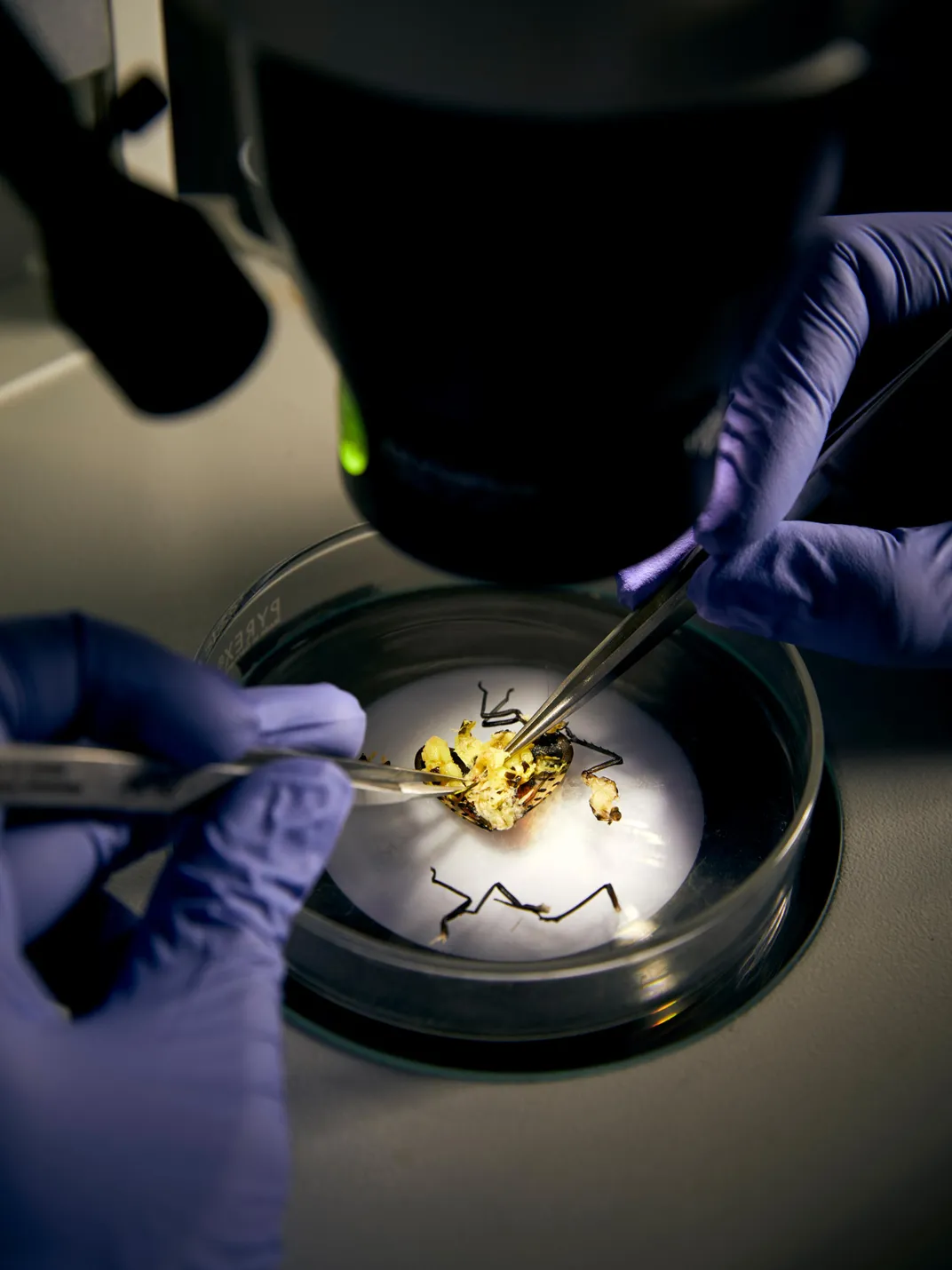
Urban oversees a lab where’s she’s trying to grow enough lanternfly to study. Because of the insect’s relatively slow reproductive cycle, and the difficulty of keeping them fed, even breeding for experimentation has proved difficult. She’s part of what has become a humming nationwide network of entomologists and departments of agriculture, universities and state resource management offices, lumber operations and hops growers, vineyards and vintners, nurseries and tree services, orchardists, foresters, gardeners and farmers.
In its way, this is the lanternfly Manhattan Project.
* * *
Alex J. Rowland runs Penn State’s Lanternfly Call Center. Ten operators sit in carrels taking incoming reports from citizens around the state. “Average day? Right now we’re at 50 calls, and it’s 11:30,” Rowland says. “That’s pretty average. We do have crazier days. Six people on the line, with three, four backed up in the queue. That’s a heavy day.”
How many calls a week?
“Roughly a thousand a week. Fluctuates anywhere from 500. We had 1,400 one week.”
The calls range from the short and sweet, people who already know that they have lanternfly, and want to report updates so the Pennsylvania Department of Agriculture gets current information. Three, maybe four minutes. For people who have never seen them before, longer calls. Wanting to know what the best pesticides are, what damage the insects might to do to the house, what crops are at risk, what this could mean for property values.
Martin Kubek grows grapes on a hillside in Lower Milford, Pennsylvania, 175 miles to the east. Hobby operation, maybe an acre and a half. Picturesque. Tidy. Kubek has done a crazy thing. He has invited Penn State to put lanternfly on some of his vines. “Somebody’s got to do something,” he says. “Here we have an invasive species that could destroy all grapes in the Eastern U.S. And what are we doing about it?” Kubek decided to offer his grapes—“some riesling that I’m not crazy about”—as a test plot.
So in the neat rows of leafing plants, more than a dozen mesh enclosures hold different numbers of lanternfly on individual grapevines. Forty here, 200 there. This to find out how many insects it takes to damage a plant—or destroy it. At the base of each plant, a sensitive electronic dendrometer has been installed to measure the bug’s destructive drain on the interior pressure of the plant. Healthy plants not only draw moisture and nutrition up from the soil, but send nutrients down to their own roots across the growing season. Lanternfly interrupt this cycle, as they do in trees, by tapping into the plant’s plumbing. This can kill a plant outright, or leave it so stressed and wounded that it can no longer produce fruit. To replace a grapevine means a grower might have to wait five extra years before the new vine makes cash-quality wine or three years for table grapes. Every dead plant may represent a half-decade loss to the bottom line.
While visiting Kubek one day, Leach was asked by a local newspaper to characterize grape growers’ lanternfly concerns. “They’re extremely terrified,” she says.
* * *
Forests blanket the green hills of the Lehigh Valley, crosshatched by a patchwork of vineyards and wineries. Talk to John Landis, gray-haired and serious over at Vynecrest, who lost many productive plants to lanternfly last year and expects to lose more this year. They come out of the tree line in clouds and settle on his grapevines until the black mold is thick on the ground-—and it gets worse as the humidity rises. Or Rich Blair up at Setter Ridge Vineyards, where the bugs are so dense they drive the customers off the patio. “They’re sucking the life out of my vines,” he says, looking you straight in the eye. You hear that phrase again and again. Sucking the life out of the vines. Over the hill, Calvin Beekman lost something like 40 acres of grapes, and people talk about him now in whispers.

Lanternfly is a threat to every ag business in Pennsylvania. Laurel Eaton Keppley knows this all too well.
At first, she says, the family put in place a labor-intensive inspection and treatment process. “We had to touch every tree multiple times. We had a checklist system, the orders were getting pulled and we would inspect for lanternfly and remove them. We would bring the trees to a staging area and do a spray on the order. Then we wouldn’t touch the order for 24 hours. And then we would inspect it, I think two more times after that, to make sure we weren’t sending anything out.”
Then the deluge. “All of a sudden,” she recalls, “we’re seeing bugs fall out the sky and hitting the windows and collecting on door frames, and on the maple trees.”
The Eatons devised a lanternfly protocol guide they have shared with other nurseries. They offer field-tested advice—“This is what worked for us. This rotating schedule of pesticides,” Keppley explains. For several years now, the Eatons have avoided a toxic option—neonicotinoids, a more effective class of pesticide, but environmentally damaging. “Kills the bees and everything,” she says.
The grape industry, she acknowledges, has it even worse. “I read stories of them losing entire crops. We can spray 24 hours before we put a tree shipment on a truck. On the grapes, it’s a bigger window that they have to stop spraying before they harvest.
“Even so, fending off the lanternfly has taken its toll,” Keppley says. “It has been stressful. There’s this constant threat of states shutting us down by not allowing us to ship into their state, which they can do. We cannot let a live or a dead spotted lanternfly get through. It’s very disheartening. And exhausting. We have to stop our lives and just make up whole new protocols, spray schedules, pest management schedules, and more paperwork and record keeping. We have to keep records for trees that are inspected, I think for three years. It’s just making business a lot more difficult. It makes you pause and say, ‘Is this worth the fight anymore? Or should we just give up and walk away?’”
Don Eaton insists that the family can beat the lanternfly invasion. “My dad is an eternal optimist,” Keppley says. “He sees opportunity everywhere. ‘We’re going to push through, make up a protocol, empower other nurseries to be ready to deal with this.’”
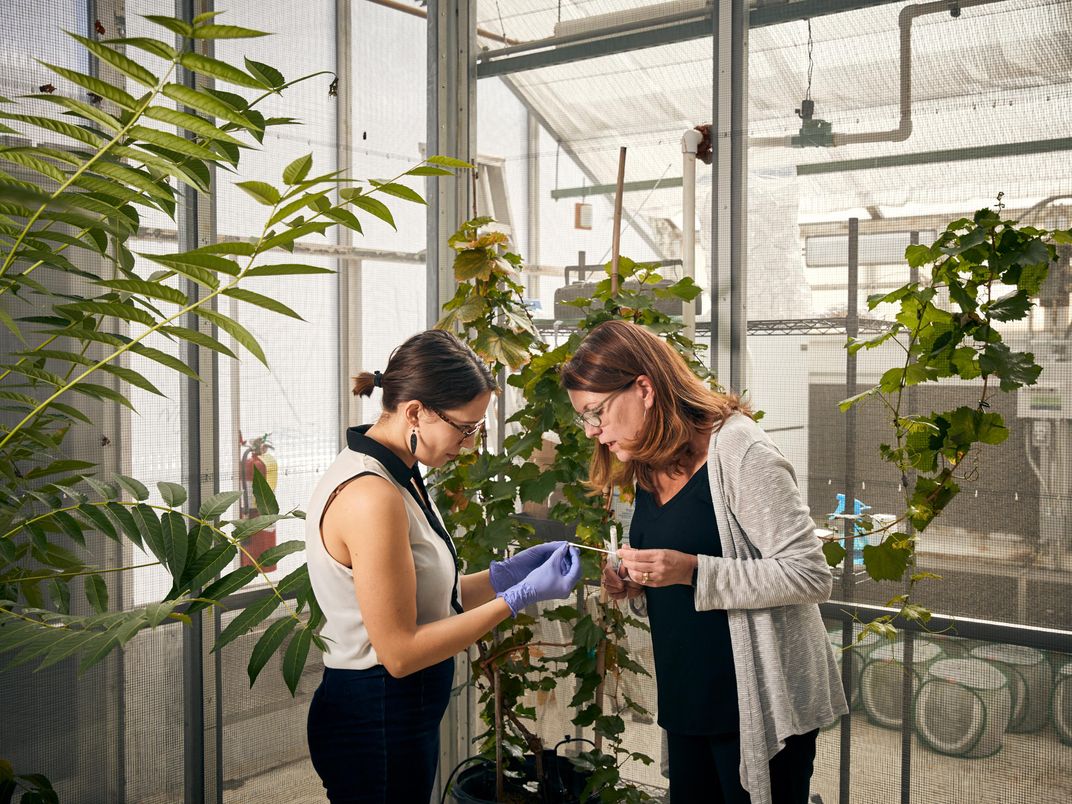
There’s more at stake for Don Eaton than money. Not only profit and loss, but stewardship. A renewal of balance and restoration of a natural order. He’s partnered the farm with the Audubon Society to restore native trees to the landscape and with them, native birds. “My job may be to make people aware that we may be out of balance—and we are part of the balance.”
Still, he admits, costs are mounting as he fights the lanternfly. “I estimate last year maybe $150,000 of real costs put to the pest. Last year I lost maybe half a million dollars to customers who were afraid to buy from us because of our location.”
Eaton was already beginning to think the unthinkable—closing the family nursery business. Then Covid-19 struck. “Our customer base—independent garden centers—are located in New Jersey, New York and Massachusetts,” he says. “All of them, at the center of Covid, had to close down. We lost 30 percent of our prebookings. New business coming in from March, April and May, 10 percent of normal.”
* * *
The Lehigh Valley is a transit hub for the entire Eastern Seaboard, a tangle of interstates leading to other interstates that carry freight from Maine to the Carolinas. Stand in a hillside vineyard anywhere on the Lehigh Valley Wine Trail, look down and you’ll see mile after mile of warehouses and fulfillment centers, transshipment yards and truck lots.
As this article goes to press, spotted lanternfly infestations have been found in Pennsylvania, New Jersey, Delaware, Virginia, West Virginia and Maryland. Internal quarantines have been instituted in most affected areas. The wall goes up.
But there’s tree of heaven along almost every highway and railway in America; the lanternfly egg mass can be cemented to anything; and the living bug can hitch a ride on everything moving. Trucks, trains, ships, cars. Airplanes.
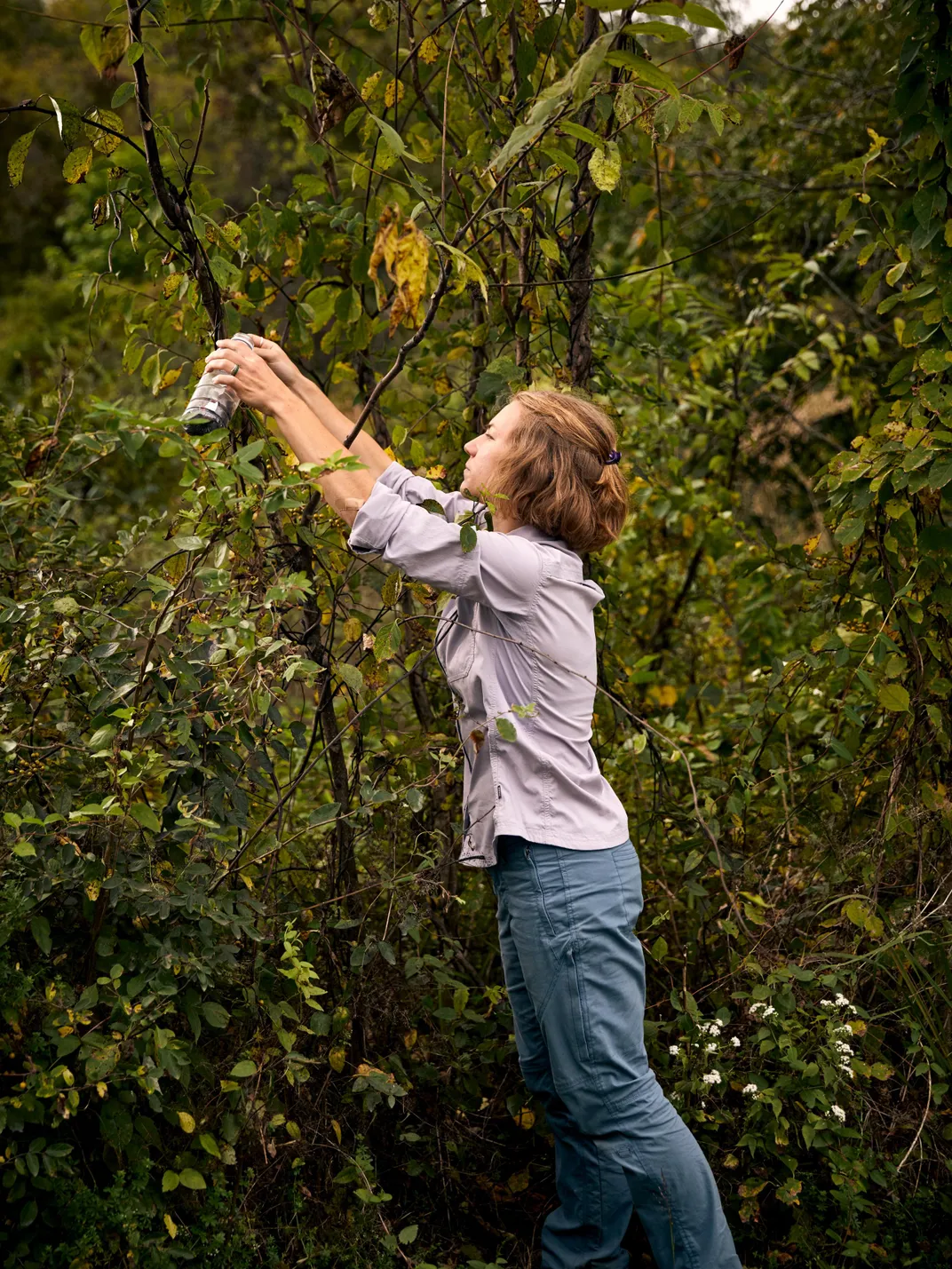
Ethan Angell is field operations manager for the division of plant industry at the New York State Department of Agriculture and Markets. In 2018, Angell and his colleagues partnered with the New York State Department of Environmental Conservation to develop a response plan, to prepare New York if and when spotted lanternfly arrives. “One of the things that we learned from Pennsylvania is that the public was very good at recognizing spotted lanternfly,” he says. New York also instituted checkpoints for trucks coming into the state from areas where lanternfly has been documented. “That gave us an additional tool to try and prevent spotted lanternfly from entry.”
Amy Stone is an agriculture and natural resources extension educator with Ohio State University. She’s up in Toledo, and has been working with the group fighting the emerald ash borer invasion in Ohio since 2002. She’s getting ready.
“We have a Great Lakes early-detection app that we have been promoting for people to report invasive species,” she says. “Now we’re trying to really ramp that up.” They are asking people to report locations of tree of heaven. Those data points will become sites that researchers will scout and monitor. “Any citizen in Ohio can participate, where they adopt an Ailanthus and weekly go out and visit that tree, looking for signs and symptoms of the spotted lanternfly.”
Do you have confirmed lanternfly in Ohio yet?
“We do not.”
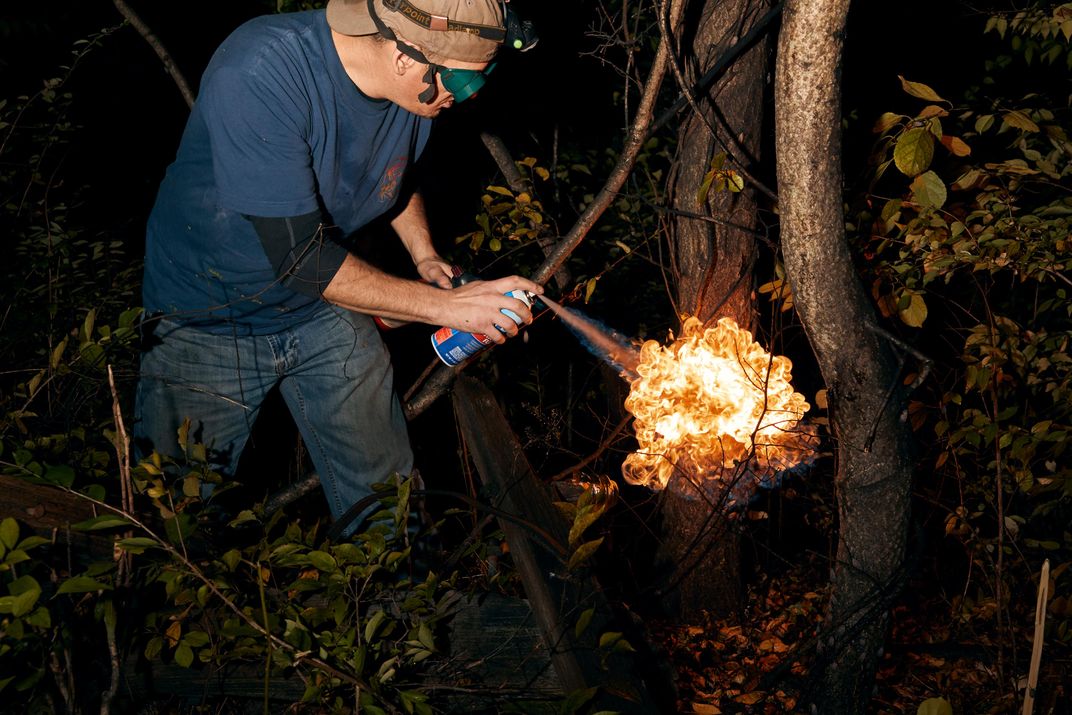
In Michigan, Robert Miller is with the Department of Agriculture and Rural Development, specializing in invasive species prevention and response. “To date,” Miller says, “we have no evidence of spotted lanternfly in Michigan.” One of his biggest concerns is grape growers. They would be the hardest hit. “And in Michigan we have both juice and wine grapes.”
Miller worries, too, about everyone else. “For the general public, this is going to be a nuisance pest. Feeding on street trees, trees near their homes, trees in their parks, maybe other vegetation in the yard. Spotted lanternfly can feed on many things, from roses all the way to black walnut and everything in the middle.”
And, on top of everything else, he says, there’s the sheer unpredictability that could accompany an outbreak. “We’re not really sure how spotted lanternfly is going to act in the state of Michigan,” he says. “We’re a little bit farther north, we have less tree of heaven, our climate’s a little different. What impact are the lakes going to have, or our landscape, or our different species? We just don’t know.”
Michigan, Miller says, has assembled a spotted lanternfly response group, consisting of staff from his agency, along with the Michigan Department of Natural Resources, the USDA and entomologists from Michigan State University.
“We’re working to develop the playbook,” he says. “Who’s on the strike teams, who’s on the survey teams, how will we communicate with each other? Those sorts of things.”
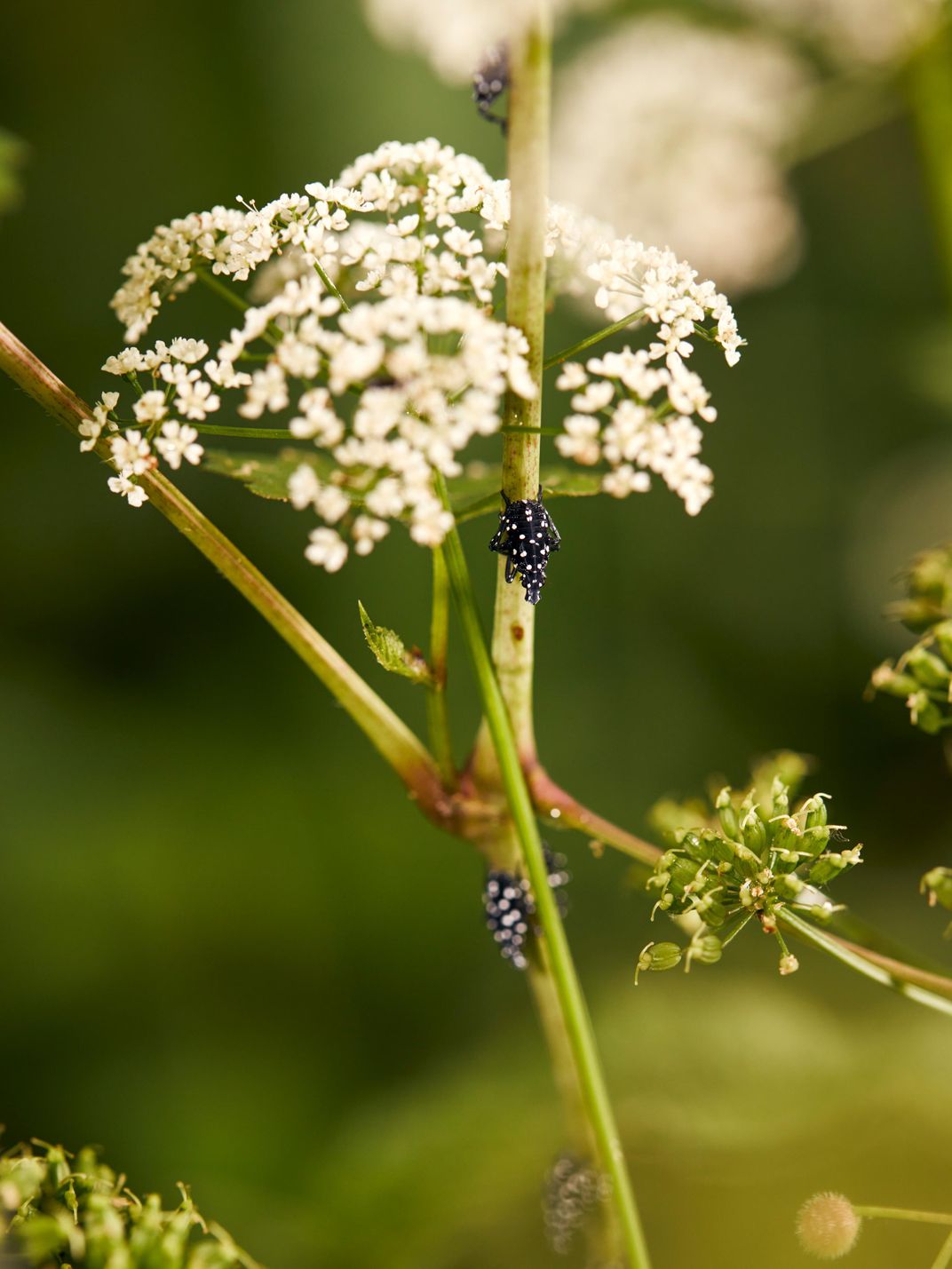
Grapes. Hops. Lumber. Apples. Stone fruit. Entire agricultural sectors at risk.
* * *
The nightmare scenario, of course, is that the bug would start to show up in California, the $50 billion-a-year engine of American agriculture, and one of the world’s greatest wineries. That’s the last 15 minutes of the horror movie. How it turns out is up to us. Because for a gifted hitchhiker like lanternfly, the question is not really if but when.
Nick Condos is division director of the plant health and pest prevention services division in the California Department of Food and Agriculture.
“I don’t know if you’ve ever driven into California, but we have border protection stations. We’re screening passenger vehicles and commercial shipments,” he says. “The spotted lanternfly has been on our radar for several years now. Fortunately, it’s also in a part of the country where the gypsy moth is endemic.” There is a national policy in place to prevent the movement of gypsy moth. “Spotted lanternfly lays its eggs on very similar things that the gypsy moth will lay its eggs on. We already had some built-in protection because of the existing gypsy moth quarantine. That’s been very beneficial.”
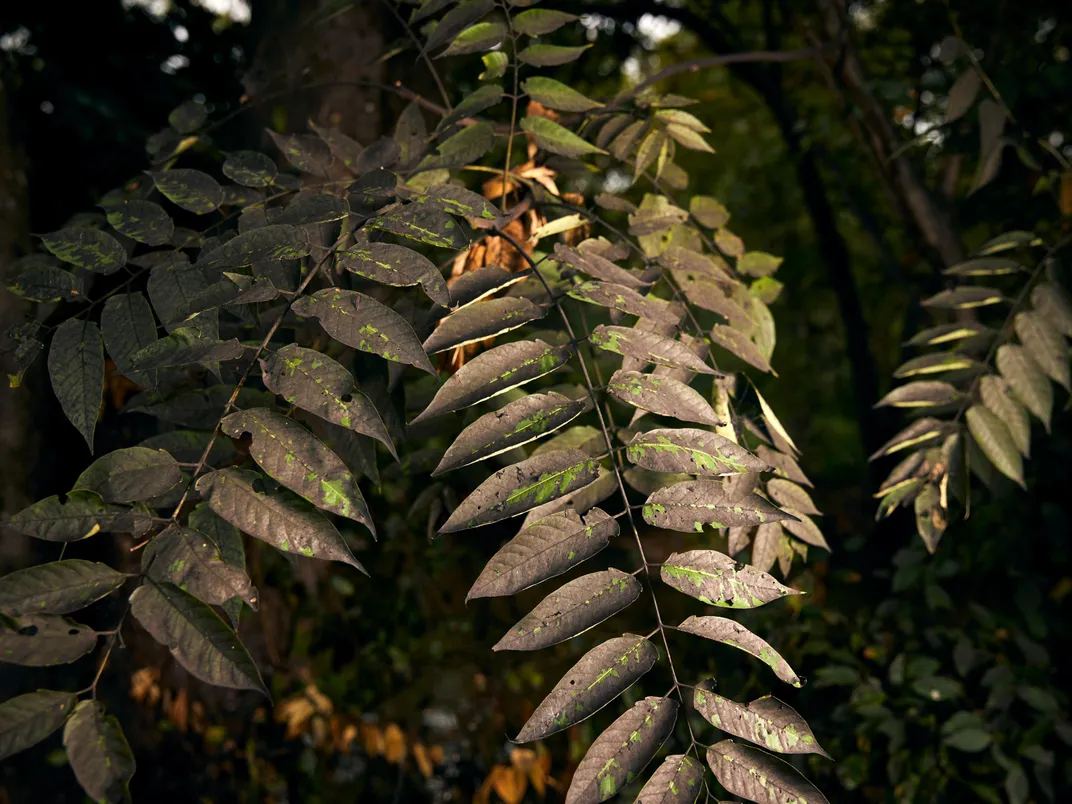
What that amounts to is a pretty good approach for keeping the lanternfly out. “No other state can do that,” Condos says. “We’re unique in that regard. We have a pest-prevention system in place designed to protect us from pests that we don’t even know are pests yet, and pests that we know are pests.”
He’s well aware, too, that California faces a dual entry challenge. “If the front door is our international ports, and the back door is our land borders with other states, it can still come in through the front door, because it’s endemic to Asia. Obviously, we’re the gateway to trade with Asia. I worry that it could come from Asia, or that it’s already here, just unbeknownst to us.”
At the University of California, Riverside, Mark Hoddle, extension specialist in biological control, is researching bio-interventions to deploy against lanternfly. “We are beginning a biological control program targeting spotted lanternfly in advance of anticipated arrival in California. This hasn’t been done before: We are taking a proactive approach to a threat.”
UC Riverside is collaborating with the USDA Beneficial Insects Research Introduction Unit in Newark, Delaware. Scientists there, Hoddle says, traveled to the native range of spotted lanternfly, which is China. “And in China they have found a parasitoid that attacks the eggs of the spotted lanternfly.” Researchers including Hoddle are evaluating the parasitoid for possible release in California. “Even though these parasitoids are classified as wasps,” he says, “they fall under a generic term that encompasses a lot of Hymenoptera. They are so tiny, you would probably never see them. They would never sting people and won’t chase your household pets around. They present no threat to children either.”

Given the state, local and national apparatus and organizations already in place, California’s Nick Condos is cautiously upbeat. “I am fundamentally optimistic for the long term, but slightly pessimistic in the short term.” At the moment, even as researchers are working flat out to understand and counteract the threat, simple lures and traps remain the available first lines of defense. “Without the ability to find a bug, you have no ability to eradicate it,” he says. “I’m not talking about Covid-19, but it’s the same issue. If you don’t have a test or a lure, you don’t know where your target is, you can’t aim at it.” Next come traps: Once lures enable scientists to detect a population large enough to be noticeable, the pest has often moved on. Because the lanternfly is “always one or two steps ahead of you,” Condos says, “traps are key.”
Condos is also encouraged by the potential for parasitoid introduction. “Getting that bio-control agent up and running, super-important. It takes the pressure off the growers from having to use pesticides, which are expensive.”
Inevitably, as things stand now, Condos says, lanternfly will continue to advance.
Despite one false alarm, there have been no live sightings of spotted lanternfly in California.
Yet.
* * *
In the long main room of the 18th-century Washington inn at the historic village of Yellow Springs, Pennsylvania, 50 or so worried homeowners, gardeners and growers from around the state have gathered for one of the Penn State Extension lanternfly information sessions. This is last fall. Good turnout. Attentive. Heather Leach delivers her talk, calm and cheerful and reassuring. What and where, botany and entomology, strong visuals. The stages and seasonal timeline of the insect, circle traps and sticky bands, how to spot lanternfly and the egg masses and report in to the call center.

We’re ten miles from Valley Forge, and the resonance between the battle fought then and the scientists on the front lines now is uncanny. She is optimistic. We can do this, she says. She speaks for 40 minutes or so. When she asks for questions, every hand goes up.
“If you’ve got a lot of lanternflies in a group, how do you kill them all?”
“Well, it depends,” Leach answers, “on what you want to use and what you mean by a lot. You can take a fly swatter. Some people are using power washers or hoses to spray them down. They drown pretty easily. If you hose them down, you can kind of smash them with your foot. Or, you can use contact insecticides, which I suggest especially if you don’t have very many, using something that doesn’t have a strong residual. It’s not likely to kill other insects visiting your tree. That can knock out lanternflies and kill them quickly.”
It’s coming on twilight now, the lights are up in the room and people are shifting in their seats or starting to stand. This is the 17th audience question. She’ll answer a dozen more on her walk to the parking lot.
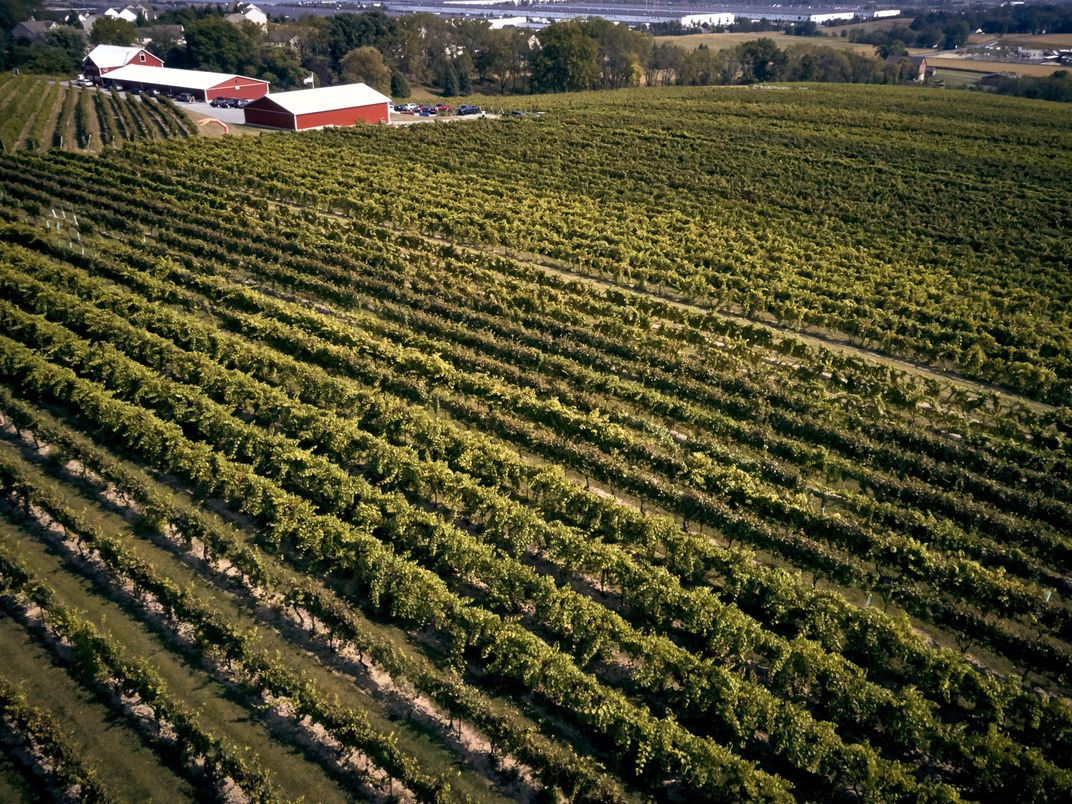
“What qualifies a species to be invasive, and is this just a natural process of evolution that we’re seeing with the introduction of species across the U.S.?”
“Almost always, when they call a species ‘invasive’ versus just ‘non-native,’” Leach answers, “it has some detrimental impact on the environment, our society, or our economy. Spotted lanternfly is all three of those. We’re seeing devastation—money being lost, this huge nuisance problem and environmental aspects that are being degraded. That’s why we call it an invasive species.”
* * *
Lanternfly and lanternfly intervention protocols and the expense and the shipping quarantines and the business model and the regulations and the pandemic and the last recession and the next recession. These are the forces arrayed against Don Eaton. So for a long time he thought and walked and talked to his wife and his children, walked and walked in the rows of trees early and late, sun on the way up, sun on the way down, talking at the kitchen table and in the conference room, kneeling to pray at his bedside and talking to the bank and the county agent and Penn State and talking to the Department of Agriculture and talking to himself and maybe he can sell part of the farm, the acreage across the road, keep the rest so the family doesn’t fly apart and move away, maybe keep the e-commerce business going with his kids. Maybe. They’ll still sell Pink Heartbreaker redbud and rose of Sharon—but online and sourced from other growers. The children and the grandchildren will have a business but not a farm, and that breaks his heart. He’ll take his hand off the plow.
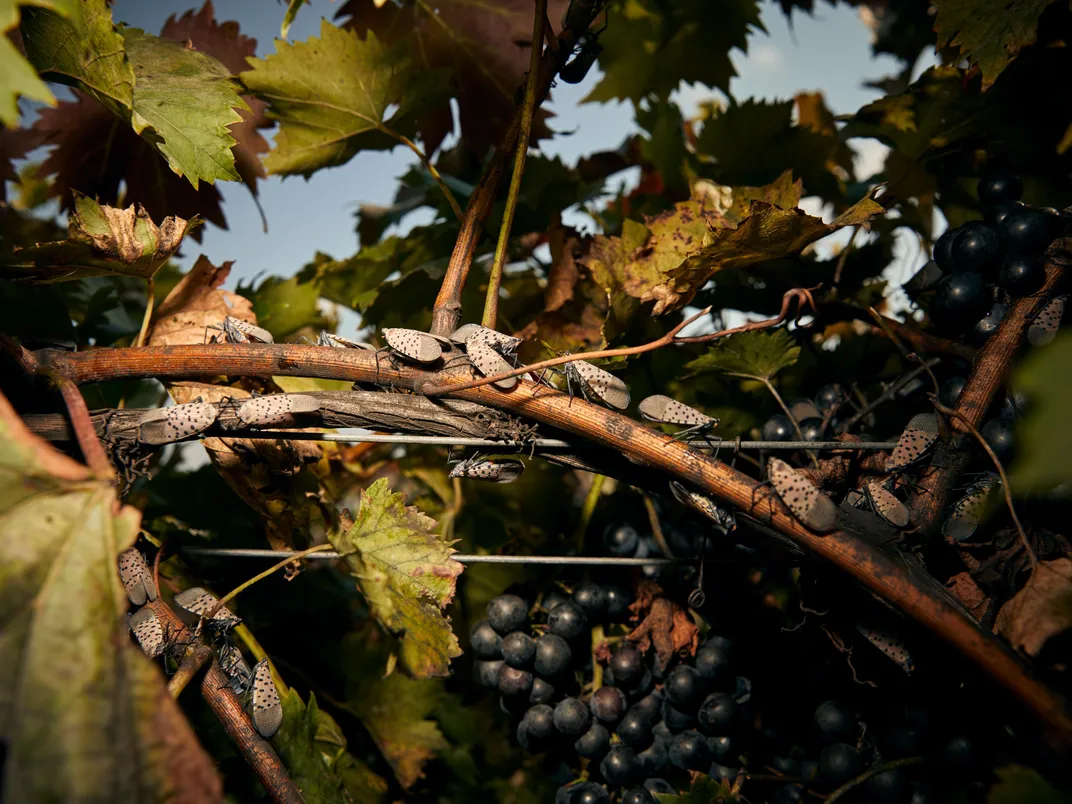
In the Book of Job, God tests a man’s faith by taking away everything he has. “He hath destroyed me on every side,” Job says, “and I am gone: and mine hope hath he removed like a tree.”
But Job’s faith does not fail him. He is restored to the world and the world restored to him. Still, science isn’t sentiment. Nor is business a parable, nor a mortgage an allegory. This is the state of things.
* * *
It is a pretty place. Redbud and sweetgum, chokecherry and crabapple, hornbeam and plum. Pin oak and yellowwood. Just enough shade to ease the heat. Here in the rows it’s quiet even as the breeze rattles the branches. You can hear your own footsteps one to the next to the next. Birdsong. The smell of sweet water and clean soil from the creek. And today that blue sky is a certain kind of blue sky, a kind of make-believe blue, storybook blue, a blue that makes you ache for something without knowing what. Peace, maybe. Wings. Hope. Home. Maybe that’s what the Eatons have sold all along, a view up through the trees to a blue sky.
But the forest rolls away to the other side of the valley, over the hills and streams in every direction and into the distance and you can sense them out there. A slow darkness in the trees, whispering and spreading. The living shadow. Lanternfly. Waiting.
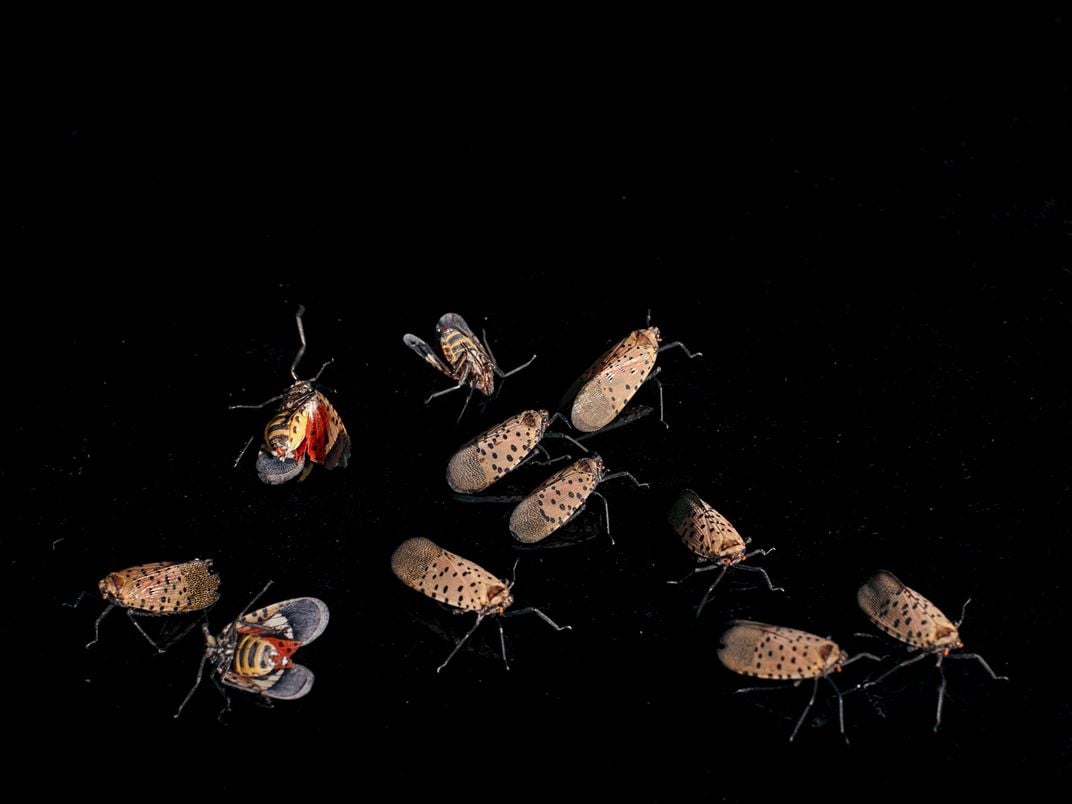
Still, Don Eaton rises, prays and walks these rows. One step after another as his world falls away. Caught like every one of us between heaven and earth. “I am just an old tired farmer,” he tells me one day. “We’re calling it quits.”
He put the farm up for sale in June.
Editor's note: An ealier version of this story mentioned that the invasive Khapra beetle had been found in warm weather climates from Arizona and New Mexico to Oklahoma and Texas. In fact, while the Khapra beetle has been intercepted at U.S. ports of entry, it has not been detected in the United States recently.
/https://tf-cmsv2-smithsonianmag-media.s3.amazonaws.com/filer/3b/60/3b60fcf9-4756-4338-ac83-a0108ded7dc0/mobile_blk.jpg)
/https://tf-cmsv2-smithsonianmag-media.s3.amazonaws.com/filer/81/94/81948bda-cbc7-42e9-aa8c-4dfcdcc45e67/opener_blk_notext.jpg)



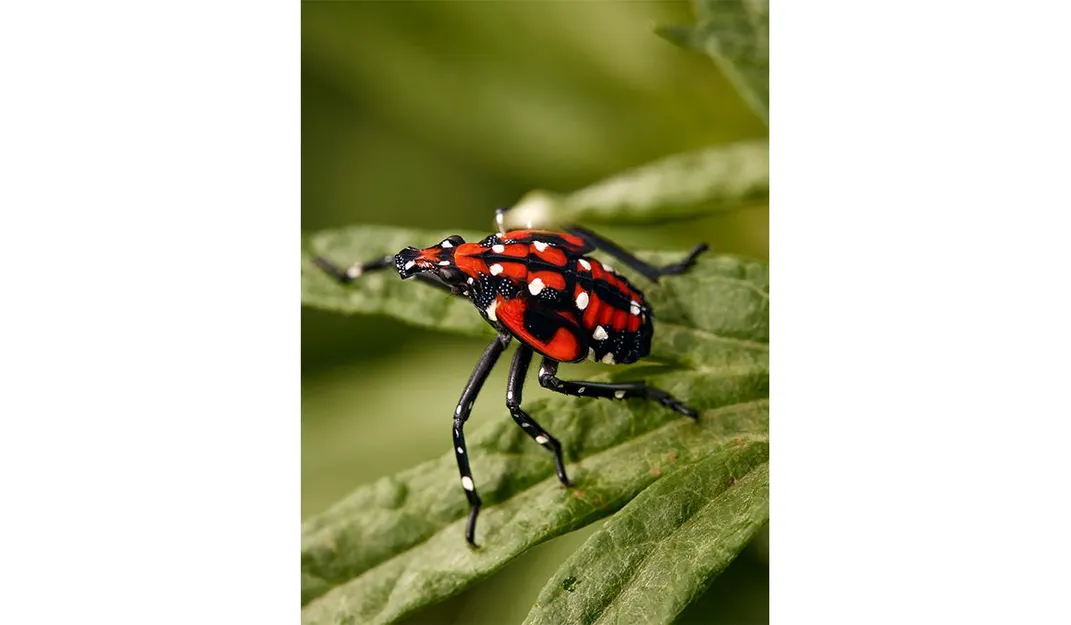
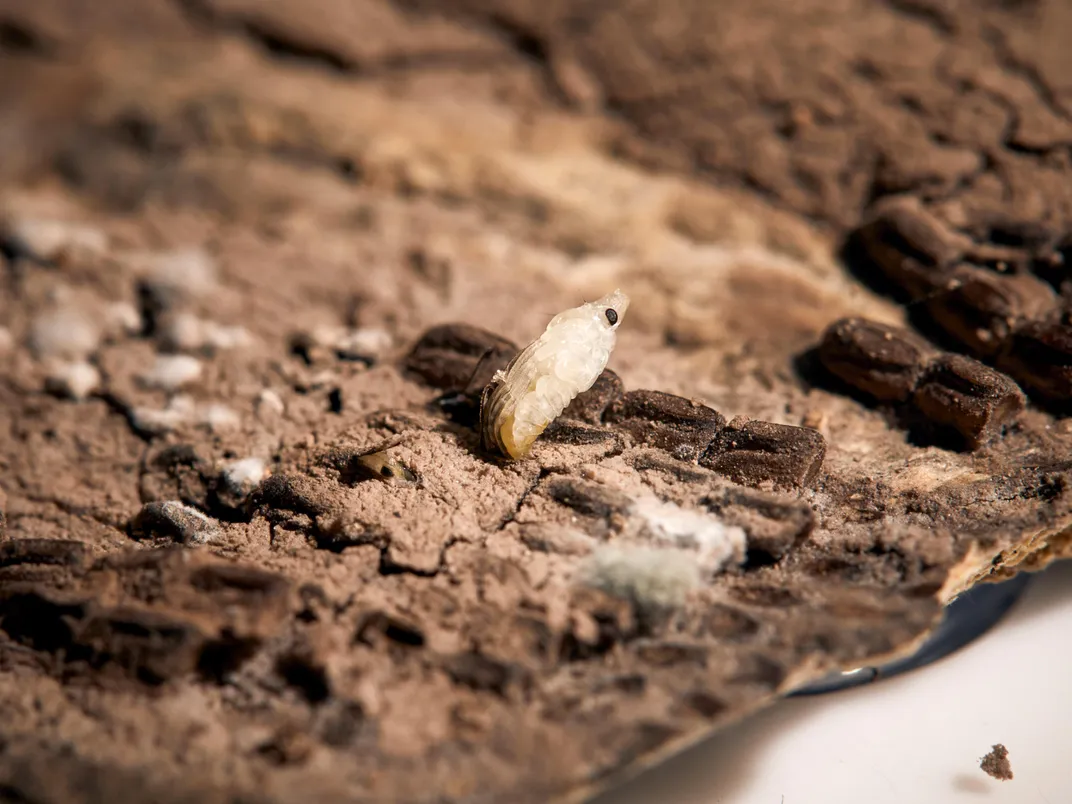


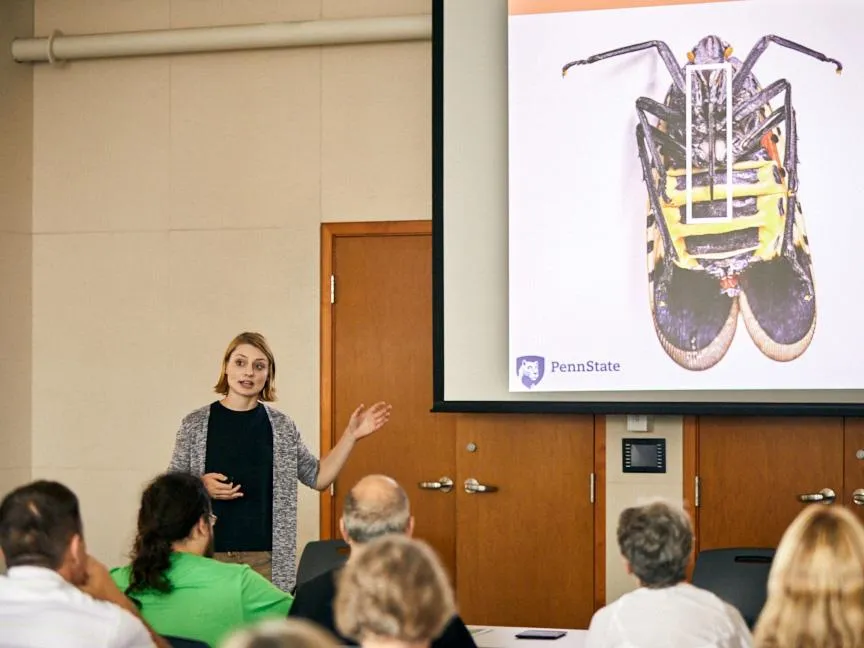


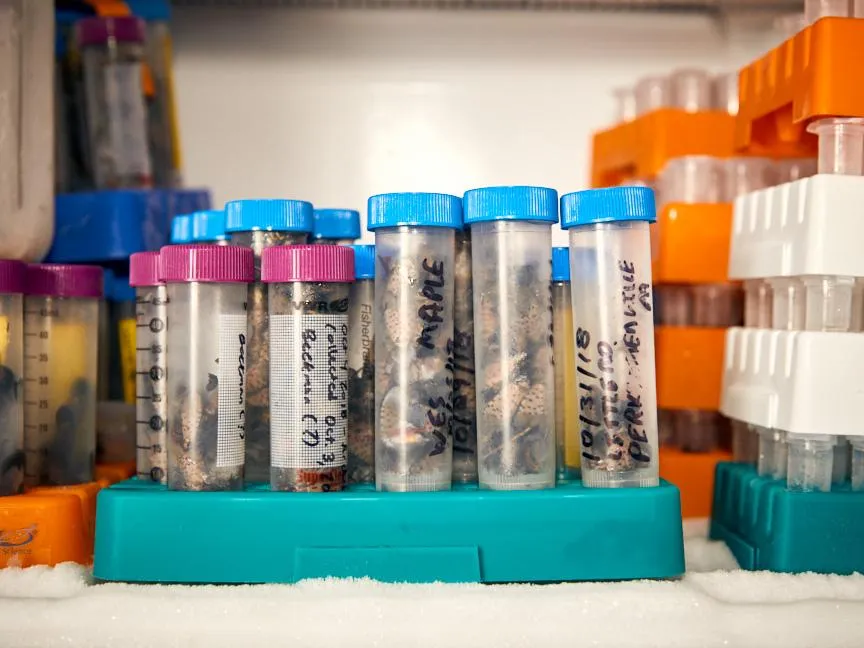
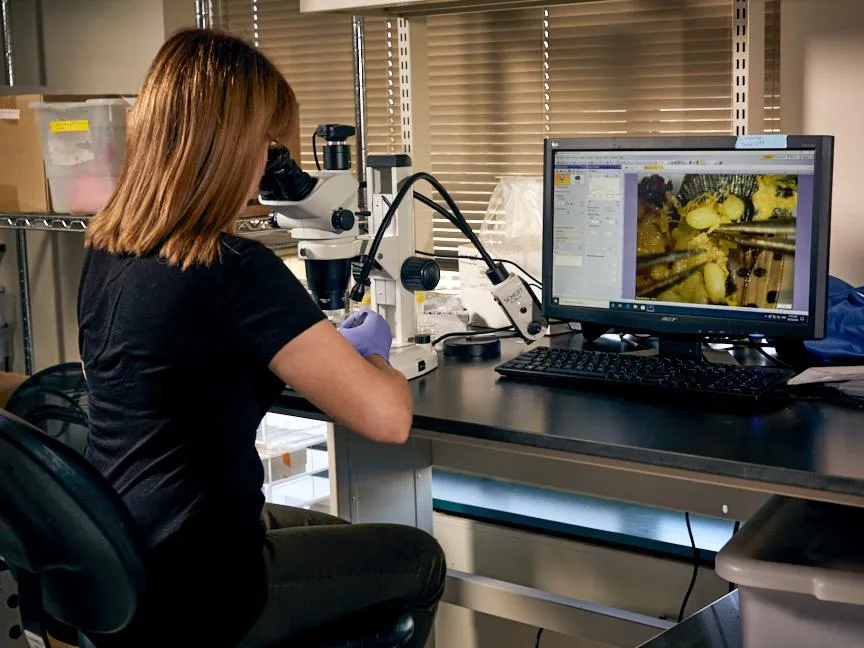
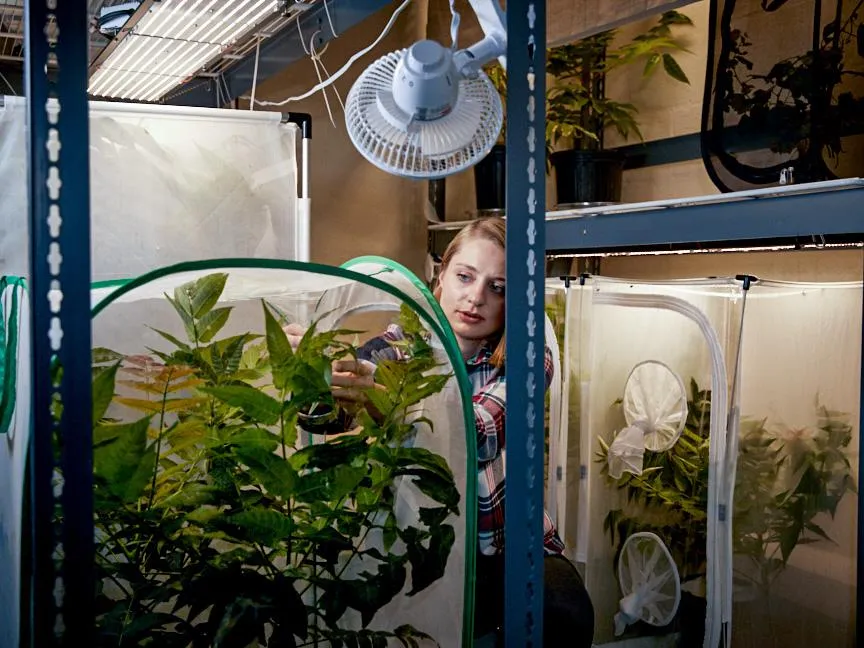


/https://tf-cmsv2-smithsonianmag-media.s3.amazonaws.com/accounts/headshot/Jeff_MacGregor2_thumbnail.png)